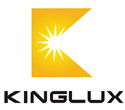|
LED optics
Lens
A lens is an optical device with precise or nearly axial symmetry that allows light to penetrate and refract to converge or diverge.

Figure 1: Two basic types of lenses - convex (convergence) lenses

Figure 2: Two basic types of lenses - concave (diverging) lenses
A single lens contains an optical component. A composite lens includes a column of coaxial single lenses. Using a multi-lens combination can reduce more aberrations than using a single lens. The lens is mostly made of glass or transparent plastic.
2. Optical component materials
Different optical components require different optical materials. The reflectors are made of different surface treated aluminum and powder coated metal sheets. Transparent polycarbonate (PC), polystyrene, and polymethyl methacrylate (PMMA) are used for microprism type diffusers and lenses. .
Reflective Optical Materials - Materials with different properties are used to satisfy different types of reflections. Here are three basic types of reflection: specular, diffuse, and blended. The difference between different types of reflections is the ratio between specular and diffuse reflections.
Figure 4: Reflection of different types of materials
Aluminum - Because aluminum has an excellent reflectance, it is the most commonly used material in high quality reflectors. Anodized aluminum, polished aluminum, and aluminum sheets covered with multiple layers of silver are also used to achieve higher reflectivity and scratch resistance.
The surface treated steel sheet, which is sprayed with white powder into different shapes and structures, achieves the desired reflection. A special material (WHITEOPTIC97) can be applied to the steel plate if high-efficiency Lambertian reflection is required.
Refractive optical materials:
PC - strong plasticity, thermoformable. Its refractive index is equal to 1.584.
PMMA - infrared light with a wavelength of 2.8 to 25 microns is permeable, and ultraviolet radiation with a wavelength shorter than 300 nm is not permeable. The reflectance is 1.49.
|


